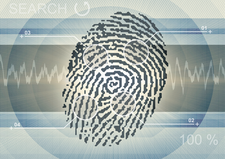Forensics with BackTrack and Sleuth Kit
Sleuthing

© fotoflash, Fotolia
Once you determine a system has been attacked, boot to the BackTrack Live forensics distro and start your investigation with Sleuth Kit.
Computer crime is a serious problem – in large part because almost all corporate information is now managed on computers rather than through traditional paper and people tools. Your computers and networks represent a juicy target for attackers, and depending on what they want, an attack might be anything from annoying to catastrophic. Because almost all your company information is on computers, anyone who accesses that information with criminal intent will probably leave clues.
One thing attacks have in common is that when you first notice an incident has occurred, you probably won't have all the information you need to deal with it. Lining up the facts sometimes requires a forensic investigation. Was the attack an inside job, or did it make use of an externally available flaw? Did the attacker access a single system, or your whole network? Did the attacker steal data? Plant a virus? Install a rootkit?
The BackTrack Live Linux distro [1] and the Sleuth Kit forensics toolkit [2] will help you gather information about the attack. In this article, I'll show you how to get started with BackTrack and Sleuth Kit, but first, I'll begin with a look at some preliminary steps to take before starting your forensic analysis.
[...]
Buy this article as PDF
(incl. VAT)
Buy Linux Magazine
Subscribe to our Linux Newsletters
Find Linux and Open Source Jobs
Subscribe to our ADMIN Newsletters
Support Our Work
Linux Magazine content is made possible with support from readers like you. Please consider contributing when you’ve found an article to be beneficial.

News
-
Parrot OS Switches to KDE Plasma Desktop
Yet another distro is making the move to the KDE Plasma desktop.
-
TUXEDO Announces Gemini 17
TUXEDO Computers has released the fourth generation of its Gemini laptop with plenty of updates.
-
Two New Distros Adopt Enlightenment
MX Moksha and AV Linux 25 join ranks with Bodhi Linux and embrace the Enlightenment desktop.
-
Solus Linux 4.8 Removes Python 2
Solus Linux 4.8 has been released with the latest Linux kernel, updated desktops, and a key removal.
-
Zorin OS 18 Hits over a Million Downloads
If you doubt Linux isn't gaining popularity, you only have to look at Zorin OS's download numbers.
-
TUXEDO Computers Scraps Snapdragon X1E-Based Laptop
Due to issues with a Snapdragon CPU, TUXEDO Computers has cancelled its plans to release a laptop based on this elite hardware.
-
Debian Unleashes Debian Libre Live
Debian Libre Live keeps your machine free of proprietary software.
-
Valve Announces Pending Release of Steam Machine
Shout it to the heavens: Steam Machine, powered by Linux, is set to arrive in 2026.
-
Happy Birthday, ADMIN Magazine!
ADMIN is celebrating its 15th anniversary with issue #90.
-
Another Linux Malware Discovered
Russian hackers use Hyper-V to hide malware within Linux virtual machines.

